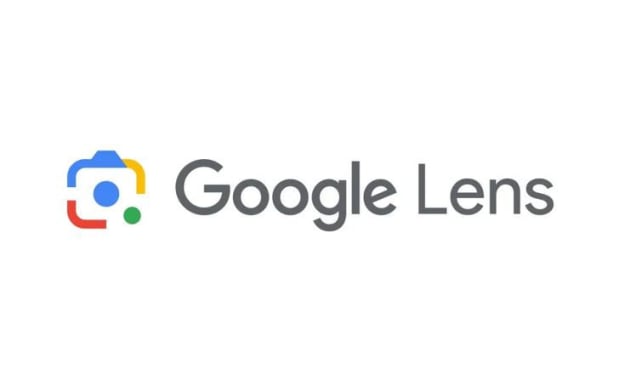Ultimate Step-by-Step Guide to Launching a Blog or YouTube Channel That Stands Out
Step-by-Step Guide to Starting a Blog or YouTube Channel: From Planning to Publishing to Promoting Your Content

Starting a blog or YouTube channel can be a fun and rewarding experience. Here are some steps you can follow to get started:
• Decide on your niche: Before you start a blog or YouTube channel, you need to decide on your niche. What topic do you want to focus on? It can be anything from cooking to fashion to tech. The more specific your niche, the easier it will be to attract a dedicated audience.
• Choose a platform: For blogging, popular platforms include WordPress and Blogger. For YouTube, you can use YouTube itself. You can also use other social media platforms to promote your content.
• Create a name: Choose a name that reflects your niche and is easy to remember. Make sure the name is available as a domain name or social media handles.
• Set up your blog or YouTube channel: Follow the instructions provided by your chosen platform to set up your blog or YouTube channel.
• Create content: Start creating content for your blog or YouTube channel. Make sure it is high-quality, informative, and engaging. Use keywords and search engine optimization techniques to improve visibility.
• Promote your content: Share your content on social media and other relevant platforms. Engage with your audience and encourage them to share your content.
• Keep going: Consistency is key to building a successful blog or YouTube channel. Keep creating high-quality content on a regular basis, and you will eventually build a loyal following.
Chapter 1: Understanding your niche
• Choosing a niche that you're passionate about
• Identifying your target audience
• Researching competitors in your niche
• Developing your unique voice and perspective
Chapter 2: Selecting your platform
• Comparing different blogging and video hosting platforms
• Weighing the pros and cons of free vs paid options
• Understanding the features and capabilities of your chosen platform
Chapter 3: Creating your online presence
• Choosing a name for your blog or channel
• Selecting a domain name and setting up hosting
Designing a logo or brand identity
• Crafting an "about" page that showcases your personality and expertise
Chapter 4: Producing quality content
• Planning and organizing your content calendar
Developing your writing or video production skills
• Creating compelling headlines and visuals
• Incorporating SEO best practices into your content
Chapter 5: Promoting your content
• Using social media to share your blog posts or videos
• Collaborating with other bloggers or YouTubers in your niche
• Guest posting on other sites to reach new audiences
• Leveraging email marketing and other strategies to build your subscriber list
Chapter 6: Engaging with your audience
• Responding to comments and feedback
Building a community around your content
• Encouraging user-generated content and feedback
• Managing and responding to criticism or negative feedback
Chapter 7: Monetizing your blog or channel
• Exploring different monetization options, such as advertising, sponsorships, or affiliate marketing
• Understanding the legal and ethical considerations of monetization
• Developing a strategy for generating income while maintaining your authenticity and credibility
Chapter 8: Growing your blog or channel
• Analyzing your site traffic and engagement metrics
• Identifying areas for improvement and experimentation
• Incorporating feedback from your audience and adapting to changing trends
• Staying motivated and committed to your long-term goals
1.Understanding Your Niche:is all about identifying the focus of your blog or YouTube channel. In this chapter, you'll learn how to choose a niche that you're passionate about and that has the potential for a dedicated audience.
First, you'll need to brainstorm ideas and identify topics that you're interested in and knowledgeable about. Then, you'll need to research your chosen niche and determine whether it has an audience and whether there are other bloggers or YouTubers already creating content in that area.
Next, you'll need to identify your target audience - the people who are most likely to be interested in your content. This will help you tailor your content to meet their needs and interests.
Finally, you'll need to develop your unique voice and perspective. This is what will set you apart from other content creators in your niche and help you build a loyal following. You can do this by drawing on your own experiences and expertise, as well as by experimenting with different styles and formats until you find what works best for you and your audience.
2. Selecting Your Platform: is all about choosing the right platform for your blog or YouTube channel. In this chapter, you'll learn how to compare different blogging and video hosting platforms, weigh the pros and cons of free versus paid options, and understand the features and capabilities of your chosen platform.
First, you'll need to decide whether you want to use a free or paid platform. Free platforms like Blogger and WordPress.com can be a good choice if you're just starting out and don't have a lot of money to invest. Paid platforms like WordPress.org and Squarespace offer more flexibility and control, but require a monthly or yearly fee.
Next, you'll need to compare different platforms and consider factors like ease of use, customization options, and support. You'll also need to consider the specific features you'll need for your blog or channel, such as video hosting capabilities or the ability to integrate with social media.
Once you've chosen a platform, you'll need to learn how to use it effectively. This may involve learning how to install plugins or widgets, customizing your theme, or using analytics tools to track your site's performance. By understanding the capabilities of your chosen platform, you'll be better equipped to create and share high-quality content that resonates with your audience.
3.Creating Your Online Presence: is all about establishing a strong online presence for your blog or YouTube channel. In this chapter, you'll learn how to choose a name, select a domain name and set up hosting, design a logo or brand identity, and create an "about" page that showcases your personality and expertise.
First, you'll need to choose a name for your blog or channel that is easy to remember and reflects your brand or niche. Then, you'll need to select a domain name and set up hosting, which will allow you to have a custom website address and full control over your site.
Next, you'll need to design a logo or brand identity that reflects your personality and resonates with your audience. This may involve hiring a graphic designer or using online tools to create a logo that stands out and reflects your unique style.
Finally, you'll need to create an "about" page that tells your story and showcases your expertise. This page should include information about your background, your passions, and your qualifications, as well as any awards or accolades you've received.
By creating a strong online presence, you'll be able to establish your brand and build trust with your audience, which can help you attract and retain followers over the long term.
4.Creating Quality Content: is all about producing high-quality content that engages and resonates with your audience. In this chapter, you'll learn how to develop ideas for blog posts and videos, craft compelling headlines, write scripts or outlines, and edit and refine your content for maximum impact.
First, you'll need to develop ideas for blog posts and videos that align with your niche and interests. This may involve researching popular topics in your industry, brainstorming ideas with other content creators or industry experts, or conducting surveys or polls to gauge your audience's interests.
Next, you'll need to craft compelling headlines that capture readers' attention and entice them to click through to your content. This may involve using strong action words, creating a sense of urgency, or tapping into emotions that resonate with your audience.
Once you've developed your ideas and crafted your headlines, you'll need to write scripts or outlines for your blog posts or videos. This will help you stay focused and on-topic, and ensure that your content is well-organized and easy to follow.
Finally, you'll need to edit and refine your content for maximum impact. This may involve cutting out unnecessary information, adding more detail or context where needed, or experimenting with different formatting or visual elements to make your content more engaging.
By creating quality content that resonates with your audience, you'll be able to establish yourself as a thought leader in your niche and build a loyal following of readers or viewers.
5.Growing Your Audience: is all about building and growing a loyal following for your blog or YouTube channel. In this chapter, you'll learn how to promote your content through social media, email marketing, and other channels, as well as how to engage with your audience and foster a sense of community around your brand.
First, you'll need to develop a social media strategy that aligns with your content and audience. This may involve choosing the right platforms, creating a content calendar, and using tools like hashtags and analytics to maximize engagement.
Next, you'll need to build an email list and develop an email marketing strategy that promotes your content and keeps your subscribers engaged. This may involve offering incentives like free ebooks or exclusive content, using segmentation and personalization to target your messages, and measuring your results to optimize your campaigns over time.
Once you've developed your social media and email marketing strategies, you'll need to engage with your audience and foster a sense of community around your brand. This may involve responding to comments and messages, hosting live events or webinars, or creating user-generated content that showcases your audience's contributions and perspectives.
By growing your audience and fostering a sense of community, you'll be able to build a loyal following of readers or viewers who trust and respect your brand, and who are more likely to share your content. with others and promote your brand through word of mouth.
6.Monetizing Your Blog or YouTube Channel: is all about earning money from your content and turning your blog or channel into a sustainable business. In this chapter, you'll learn about different monetization strategies, such as advertising, sponsorships, affiliate marketing, and creating and selling your own products.
First, you'll need to understand how advertising works and how to monetize your blog or channel through ad networks like Google AdSense or affiliate programs. This may involve understanding the different types of ads, such as display ads or native ads, and optimizing your content and website for ad placements that generate the most revenue.
Next, you'll need to learn how to attract sponsorships and brand partnerships, which can provide a more lucrative source of income for your blog or channel. This may involve developing a media kit that showcases your brand and audience, reaching out to brands or agencies directly, or using influencer networks to connect with potential partners.
Once you've developed a strong following and reputation in your niche, you may also consider creating and selling your own products, such as digital courses, ebooks, or merchandise. This can provide a more sustainable source of income and help you build a stronger connection with your audience.
By monetizing your blog or YouTube channel effectively, you'll be able to turn your passion into a profitable business that provides value to your audience and supports your personal and professional goals.
7.Measuring Success and Optimizing: Your Strategy," is all about analyzing your results and using data to improve your content, audience growth, and monetization strategies. In this chapter, you'll learn about different tools and metrics you can use to track your performance, and how to use that data to optimize your strategy over time.
First, you'll need to understand the different metrics that are important for measuring success on your blog or YouTube channel. This may include metrics like page views, unique visitors, engagement rates, subscriber counts, revenue, and more. By tracking these metrics over time, you'll be able to identify trends and areas for improvement.
Next, you'll need to use different tools to measure and analyze your results. This may include using tools like Google Analytics or YouTube Analytics to track website or channel performance, social media monitoring tools to track mentions and engagement, or email marketing platforms to track open and click-through rates.
Once you've collected and analyzed your data, you'll need to use that information to optimize your strategy over time. This may involve experimenting with different types of content, adjusting your social media or email marketing strategies, or testing different monetization strategies to see what works best for your audience and business goals.
By measuring your success and optimizing your strategy over time, you'll be able to stay ahead of the competition, keep your audience engaged and satisfied, and build a successful blog or YouTube channel that generates consistent revenue and supports your personal and professional goals.
8.Staying Motivated and Consistent: is all about maintaining your passion and commitment for your blog or YouTube channel, and staying consistent in your content creation and marketing efforts over the long term. In this chapter, you'll learn about different strategies for staying motivated, overcoming creative blocks, and staying focused on your goals.
First, you'll need to understand the importance of setting clear goals and objectives for your blog or channel, and developing a plan for achieving those goals. This may involve setting specific targets for traffic, revenue, or engagement, and developing a content calendar that aligns with those objectives.
Next, you'll need to cultivate habits and routines that support your productivity and creativity. This may include setting aside dedicated time for content creation, taking breaks to recharge your energy and inspiration, and seeking feedback and support from your community and peers.
Finally, you'll need to stay flexible and adaptable in the face of challenges and setbacks, and remain committed to your vision and purpose for your blog or channel. This may involve seeking inspiration and learning from others in your niche, experimenting with new ideas and formats, and embracing failure as a natural part of the creative process.
By staying motivated and consistent in your content creation and marketing efforts, you'll be able to build a successful and sustainable blog or YouTube channel that provides value to your audience and supports your personal and professional goals over the long term.
About the Creator
Miracle Phronesis
The World Belongs To Those Who Read






Comments (1)
Nice